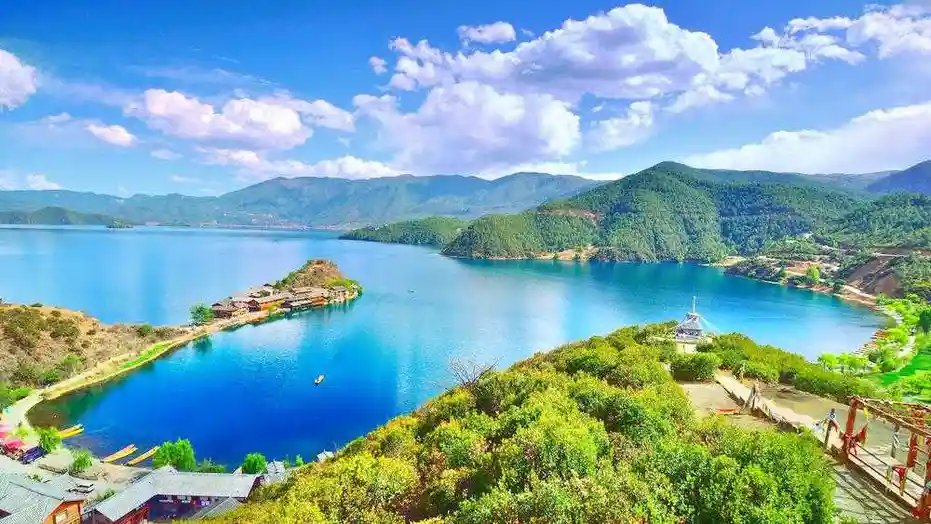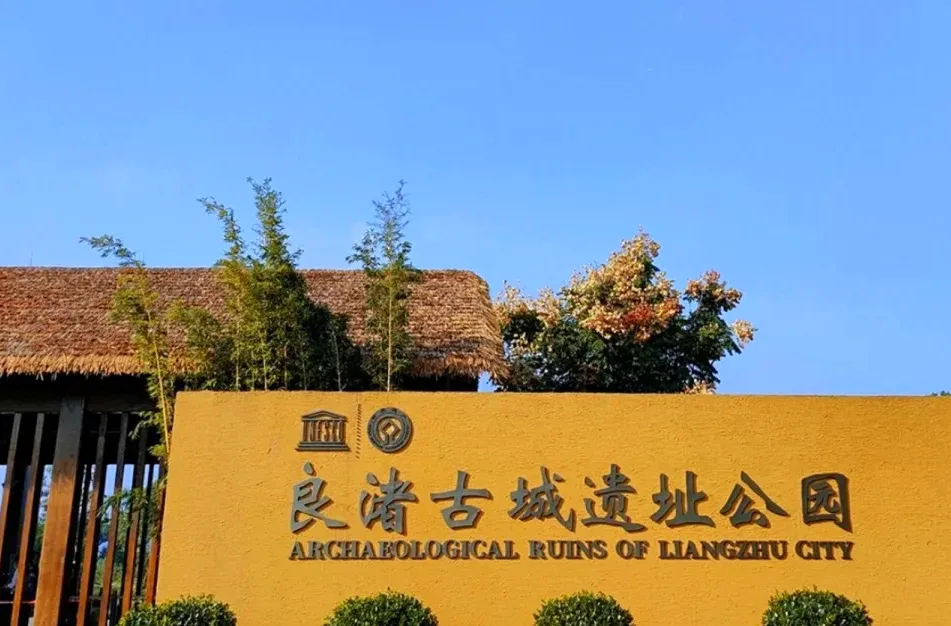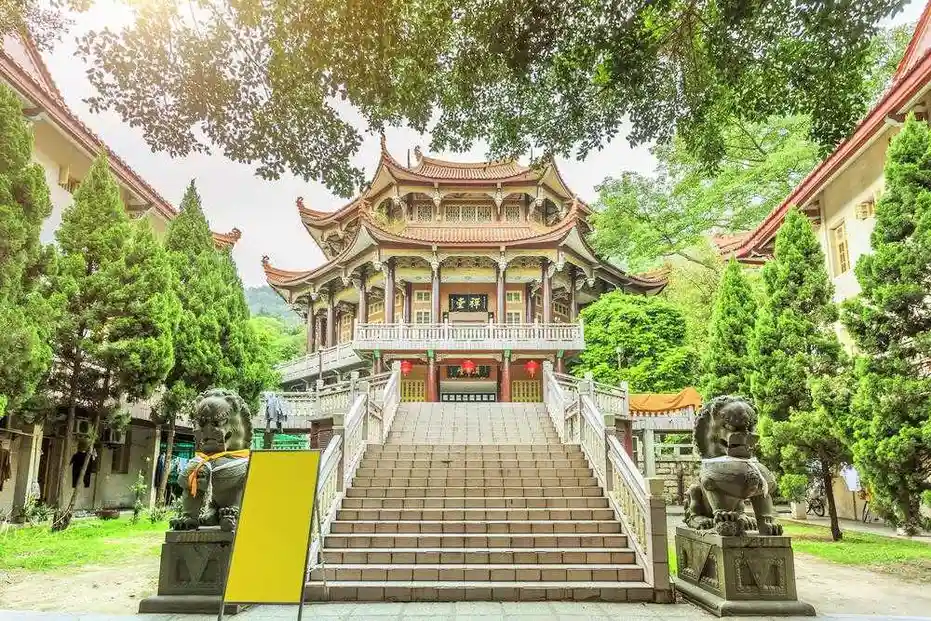Discover the Hidden Gem of Southwest China
Nestled in the mountains between Yunnan and Sichuan provinces, Lugu Lake is one of China’s most breathtaking natural wonders. Surrounded by lush forests, towering peaks, and traditional villages, this pristine alpine lake offers a peaceful escape from modern life.
But Lugu Lake isn’t just about scenic beauty. It’s also home to the Mosuo people, a unique matriarchal society with customs and traditions unlike any other in the world. Their culture adds a rich layer of depth to any visit.
This travel guide will walk you through the best things to do and see around Lugu Lake. From hiking trails and boat rides to cultural experiences and local food, you’ll find everything you need to plan an unforgettable trip. Whether you’re an adventurous traveler or seeking quiet reflection by the water, Lugu Lake has something special for you.
Explore the Natural Beauty of Lugu Lake
The first thing that strikes visitors is the crystal-clear water of Lugu Lake. The lake spans about 50 square kilometers and reaches depths of over 90 meters in some areas. Its turquoise hue changes with the sunlight, creating stunning reflections of the surrounding mountains.
Surrounding the lake are walking paths perfect for a morning stroll or a full-day hike. One popular trail circles nearly the entire lake, offering panoramic views at every turn. Along the way, you’ll pass small shrines, grazing yaks, and quiet fishing spots.
Don’t miss the view from Lovers’ Island (also known as Nuomi Island), a small hill rising from the lake’s surface. It’s not actually an island but connected by a narrow strip of land. Still, it offers one of the best vantage points for photos.
Here’s a quick look at what makes the scenery so special:
- Water clarity: Among the cleanest in China
- Elevation: Over 2,600 meters above sea level
- Wildlife: Home to rare fish and migratory birds
- Seasonal changes: Snow-capped peaks in winter, wildflowers in spring
Nature lovers will appreciate how untouched the area feels. Thanks to responsible tourism efforts, Lugu Lake remains a sanctuary of peace and beauty.
Take a Traditional Mosuo Boat Ride
One of the most iconic experiences at Lugu Lake is riding in a *zhucaochuan*—a hand-carved wooden boat unique to the Mosuo people. These boats, shaped like swans or phoenixes, are powered by paddles and offer a quiet way to glide across the calm waters.
Local Mosuo women often serve as guides. They’ll share stories about life on the lake, point out hidden coves, and sometimes sing traditional songs. It’s a peaceful, intimate way to connect with the culture and environment.
Most boat tours last 30 to 60 minutes and depart from either Luoshui Village or Lige Peninsula. Prices are reasonable, usually between $5 and $10 per person. For a more private experience, you can rent a boat for a longer ride.
Tips for your boat ride:
- Go early in the morning to avoid crowds and catch the mist rising off the water
- Bring a light jacket—breezes can make it chilly on the lake
- Ask your guide about local legends tied to the lake’s shape and islands
This simple activity offers a deep sense of place. Floating on Lugu Lake in a swan boat feels like stepping into a dream.
Visit the Mosuo Cultural Village
To truly understand the region, a visit to a Mosuo cultural village is essential. The Mosuo are often called the “last matriarchal society” in China. Women hold leadership roles in the family, property is passed through the female line, and romantic relationships follow a practice known as “walking marriage.”
In these villages, you can tour traditional stilt houses, learn how butter tea is made, and watch folk dances performed in colorful costumes. Some homes offer guest stays, giving you a chance to eat meals with a Mosuo family and hear their stories firsthand.
Key cultural highlights include:
- Walking marriages: Partners live separately but meet at night; children are raised by the mother’s family
- Matriarchal households: Grandmothers often make major family decisions
- Religious beliefs: A blend of Tibetan Buddhism and nature worship
Respect is key when visiting. Always ask before taking photos of people, and follow your guide’s lead during ceremonies. This isn’t a performance—it’s a living culture.
Hike the Lugu Lake Trail Loop
For active travelers, hiking the Lugu Lake trail loop is a must. The full loop is about 30 kilometers and usually takes a full day to complete. Most people start in Luoshui and walk clockwise around the lake.
The path is well-marked and mostly flat, though there are a few steep sections. Along the way, you’ll pass through pine forests, open meadows, and quiet villages. Each turn reveals a new perspective of the lake.
Many hikers break the journey into two days, staying overnight in a guesthouse in Lige or Yila. This allows time to rest, enjoy local food, and watch both sunrise and sunset over the water.
What to bring:
- Comfortable hiking shoes
- Water and snacks
- Sun protection (hat, sunscreen)
- Camera or phone for photos
If you don’t want to do the full loop, shorter sections are just as rewarding. Even a 2- or 3-hour walk offers stunning views and a sense of adventure.
Enjoy Local Mosuo Cuisine
Food is a big part of the Lugu Lake experience. Mosuo cuisine is hearty, simple, and deeply tied to the land. Staples include potatoes, corn, pork, and dairy from yaks and goats.
One must-try dish is *suan nai gen*—a fermented milk snack with a tangy flavor, often served in a wooden bowl. Another favorite is *pig stomach soup*, made with herbs and rice stuffing. It may sound unusual, but locals say it’s great for digestion at high altitudes.
Here are a few common dishes to look for:
| Dish | Description | Where to Try |
|---|---|---|
| Suan Nai Gen | Fermented yak milk, slightly sour and creamy | Local homes, village restaurants |
| Pork Pastry (Zhake) | Savory pastry filled with seasoned pork | Street vendors, markets |
| Butter Tea | Salty tea mixed with yak butter | Every household, guesthouses |
Meals are often shared family-style. Don’t be surprised if your host insists on serving you seconds—or thirds!
Stay in a Lakeside Guesthouse
Accommodation around Lugu Lake ranges from basic guesthouses to comfortable boutique lodges. Most are located in Luoshui, Lige, or Xiaowalu.
Staying lakeside means waking up to soft light reflecting on the water and falling asleep to the sound of gentle waves. Many guesthouses have large windows, rooftop terraces, and cozy fireplaces.
Mosuo-run guesthouses often include home-cooked meals and cultural activities like dance lessons or storytelling. Prices are affordable, with double rooms starting around $25–$40 per night.
When choosing a place to stay, consider:
- Proximity to the lake (some places are just steps from the shore)
- Whether meals are included
- If the staff speaks basic English
- Guest reviews on travel platforms
A good night’s rest enhances the whole experience. There’s nothing quite like sipping tea on your balcony while watching the morning fog lift from Lugu Lake.
Photograph the Best Sunrise and Sunset Spots
Lugu Lake is a photographer’s dream. The interplay of light, water, and mountains creates magical moments at dawn and dusk.
The best sunrise spot is Lige Peninsula. Arrive 30 minutes before sunrise to claim a good position. As the sun peeks over the mountains, the lake turns golden, and the sky shifts from pink to orange.
For sunset, head to the western side near Yila Village. The light reflects off the water, casting long shadows across the fields. Lovers’ Island makes a perfect silhouette in the background.
Photography tips:
- Use a tripod for sharp long-exposure shots
- Bring a polarizing filter to reduce glare
- Shoot in RAW format for better editing
- Respect local privacy—ask before photographing people
Even casual phone photographers will come away with stunning shots.
Respect Local Culture and Environment
As tourism grows, it’s more important than ever to travel responsibly. Lugu Lake’s beauty and culture are fragile. Simple actions can help preserve them for future visitors.
Avoid littering—there are few trash bins, so carry a small bag for your waste. Never feed wild animals or disturb sacred sites. When visiting temples or homes, dress modestly and remove your shoes if asked.
Support local businesses by buying crafts directly from artisans and eating at family-run restaurants. This ensures your money benefits the community.
Remember: you’re a guest in the Mosuo people’s homeland. A smile, a thank you, and a respectful attitude go a long way.
Plan Your Visit to Lugu Lake
The best time to visit Lugu Lake is from April to October. Spring and early summer bring wildflowers, while autumn offers clear skies and comfortable temperatures. Winters are cold and snowy but peaceful, with fewer tourists.
Getting there usually involves flying to Lijiang or Xichang, then taking a 4–5 hour bus or private car ride. Roads are winding but well-paved.
Pack layers—weather changes quickly at high altitude. Don’t forget a power bank, as some guesthouses have limited electricity.
Whether you spend two days or a week, Lugu Lake leaves a lasting impression. Its natural beauty, rich culture, and tranquil energy make it one of China’s most special destinations.
Plan thoughtfully, travel lightly, and let the spirit of Lugu Lake guide your journey.



